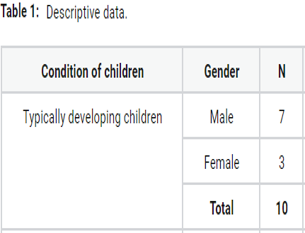Abstract
Where there are few occupational therapists in regular practice, and an educational psychologist and special educators conducted the majority of the assessment procedure and evaluation of children with visual-motor integration (VMI). They consider assessing children with VMI as similar to the assessment of children with research instruments, and the availability of the trained occupational therapist was limited. VMI is generally expressed as the ability of the child to integrate visual perception input and to coordinate it with limb movements for the execution of motor activities in sequential order. A child with impaired VMI skills fails to execute motor- based activity. We evaluated the visual-motor integration (VMI) in children with and without reading disabilities (RDs) in the primary schools of Mudichur. Full Range Test of Visual-Motor Integration (FRTVMI) was used to evaluate the visual-motor integration among children. A total of 20 children recruited from primary schools in Mudichur. Every parent of the children gave the willingness to participate in the study; 10 children were already diagnosed as having RDs, whereas the remaining 10 children were age-matched typically developing children. The results indicated that children with reading disability scored poor on the FRTVMI than the typically developing age-matched peer-group children. The results support the impairment in visual-motor integration is strongly related to learning disabilities, and the therapist should educate teachers of primary schools to refer children with learning disabilities. However, there is a need for strong assessment among children’s to quantify their skills in reading and writing, and it is vital to diagnose children in the early years to avoid academic failures. Teachers were in need to be educated to refer children are who are suspected of being at risk for RDs in school settings.
Full text article
Authors

This work is licensed under a Creative Commons Attribution-NonCommercial-NoDerivatives 4.0 International License.

